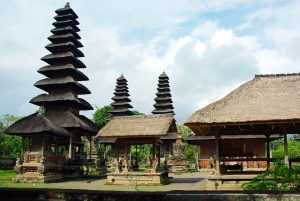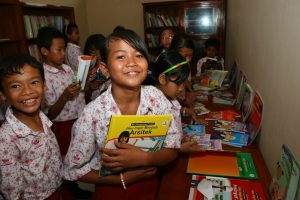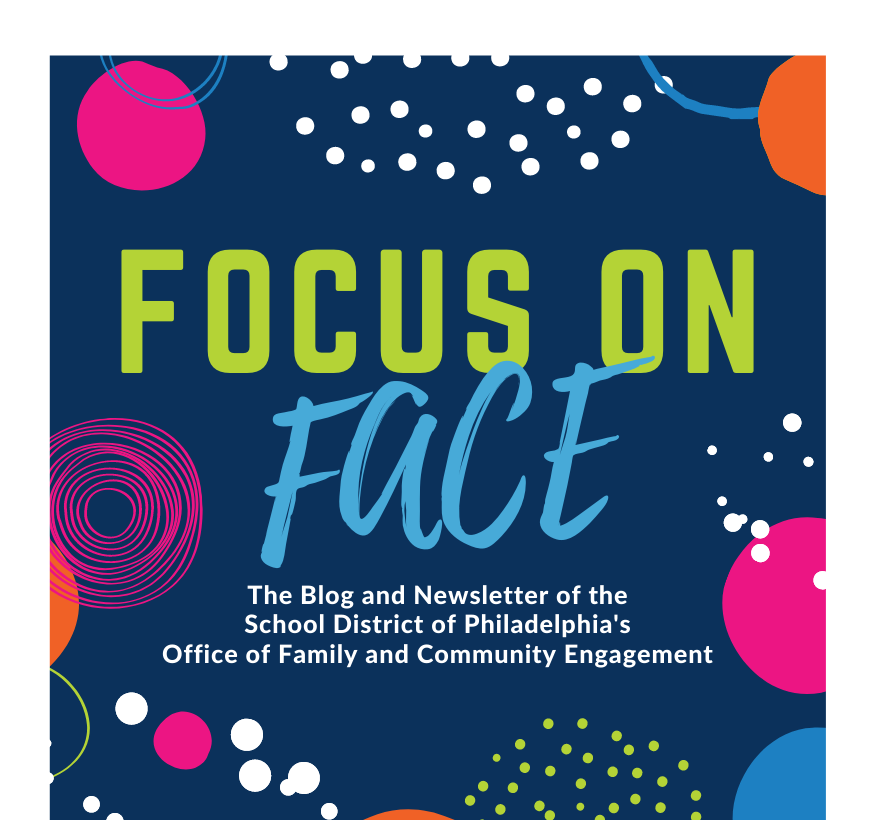 Philadelphia is an incredibly diverse city, and its schools have students from all around the world. With such a multicultural school district, how do you educate students in a way that honors and gives a voice to all of their cultural experiences? Indonesia is a great example of an entire nation that is doing just that.
Philadelphia is an incredibly diverse city, and its schools have students from all around the world. With such a multicultural school district, how do you educate students in a way that honors and gives a voice to all of their cultural experiences? Indonesia is a great example of an entire nation that is doing just that.
Diversity is at the crux of Indonesia’s culture. The country’s national motto, Bhinneka Tunggall Ika (Unity in Diversity) even recognizes how diverse the population of Indonesia is. This became Indonesia’s national motto after the nation gained independence from the Dutch at the end of World War II.
The national motto shows dedication to a vision based on “multi-ethnic fusion” where diversity is preserved and promoted, in contrast to a “melting pot” where distinct cultures must assimilate into one. The motto also represents how the government of Indonesia at the time intended to shape its policies with the consideration of cultural pluralism and the political challenges this could bring.
Indonesia has a population of over 260 million people, and over 300 ethnic groups call Indonesia home. The largest ethnic group is the Javanese people, who make up about 40% of the population. Sundanese people make up the second largest ethnic group—about 15% of the population. Other ethnic groups include Chinese, Malay, Madurese, and Batak people.
Bahasa Indonesia, or Indonesian, is the official language of Indonesia; however, there are over 700 languages spoken, including English, Dutch, and many different local dialects.
One of the most impressive statistics, though? Indonesia has a literacy rate of 95%.
Indonesia classifies its diversity according to religion. Indonesia is a religious country and recognizes freedom of religion within certain guidelines. Only six religions are recognized by the country, and every single citizen of Indonesia must specify one of these six religions on their identity cards, birth certificates, marriage licences, and more. The six religions are Islam (87%), Protestantism (7%), Catholicism (3%), Hinduism (2%), Buddhism and Confucianism (1%).
This religion-based classification system has greatly influenced education in Indonesia. Indonesia has the third largest education system in Asia and the fourth largest in the world, with over 50 million students and 2.6 million teachers in more than 250,000 schools.
The Ministry of National Education oversees 84% of public schools, while the Ministry of Religious Affairs oversees 16%, which are usually Islamic schools. Seven percent of all primary schools in the country are private, while a whopping 56% of junior secondary schools are private and an even greater percentage— 67%—of senior secondary schools are private.
While private and public school curriculums of course tend to differ, religion classes in both types of schools are compulsory, and the average student will have about two religion classes each week.
Efforts are being made, especially in private faith schools and higher education, to offer religion classes to religious minorities in the school. For example, a private Catholic school will likely have an Islam religion class taught by a Muslim teacher for the school’s Muslim student population.
This strategy is more difficult to implement in state-funded schools, however, because of funding. The government has been taking steps to follow the example of some private and parochial schools and incorporate religious tolerance in public education.
The push for more inclusive religious studies has started a movement towards multicultural education in order to reflect the diversity of the population of Indonesia.

Photo Credit: The USAID Prioritizing Reform, Innovation, Opportunities for Reaching Indonesia’s Teacher, Administrators, and Students (PRIORITAS) Program/Flickr.
What constitutes multicultural education? The main goal of multicultural education is to adopt a sympathetic, respectful, and appreciative attitude towards the many different cultures, ethnicities, and religions that make up Indonesia.
Scholars differ in how to go about achieving this goal. Some believe that multicultural education is one that attempts to do away with discrimination in access to education, so that every child can receive a quality education regardless of their ethnicity, gender, or religion. With increased access, many different perspectives from students will be brought into the classroom and thus provide a more well-rounded education.
Others believe that a multicultural education is one that incorporates Indonesia’s cultural and ethnic diversity and highlights the country’s efforts to preserve this diversity. Some scholars believe that multicultural education should reform certain narratives in the classroom, emphasizing religious tolerance and presenting diverse perspectives so that the heroes of history don’t all look the same and practice the same religion.
Multicultural education has been a part of Indonesian academic discourse for years. Scholars have been researching and writing about the benefits of a multicultural education in Indonesia, ways to incorporate a more multicultural education in Indonesian schools, as well as recommendations for the government to implement multicultural education in public schools little by little. However, the government has been focusing more on increasing access to education and increasing enrollment in older grades. Private schools have been embracing innovation and are more open and able to take steps towards offering a multicultural education.
Since the majority of junior and senior secondary schools are private, small steps taken by private schools towards a multicultural education can have a large impact. If both public and private schools in Indonesia are able to make strides towards offering a multicultural education, then students of all backgrounds can achieve a more inclusive and comprehensive education.
Sources:
“Indonesia Demographics Profile 2018.” Indexmundi. Last modified January 20, 2018. https://www.indexmundi.com/indonesia/demographics_profile.html.
“Multiculturalism: Some Lessons from Indonesia.” Cultural Survival, Inc. Last modified June 1994. https://www.culturalsurvival.org/publications/cultural-survival-quarterly/multiculturalism-some-lessons-indonesia
Parker, Lynn. “Indonesia’s ‘Multicultural Laboratories.’” Qantara.de. Last modified January 17, 2011. https://en.qantara.de/content/teaching-religious-tolerance-indonesias-multicultural-laboratories.
Suyahman. “Implementation of Multicultural Education in Indonesia: Between Expectations and Reality.” The 2nd International Conference on Science, Technology, and Humanity. Last modified August 1, 2016. https://publikasiilmiah.ums.ac.id/bitstream/handle/11617/7479/19%20Suyahman.pdf?sequence=1&isAllowed=y.
“World Bank and Education in Indonesia.” The World Bank. Last modified September 1, 2014. http://www.worldbank.org/en/country/indonesia/brief/world-bank-and-education-in-indonesia

